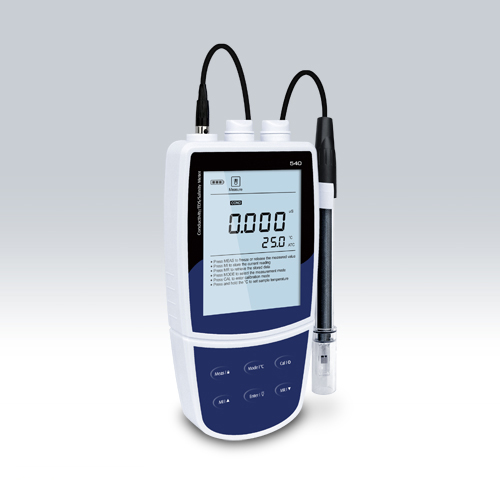Conductivity is a measure of the solution’s ability to conduct electricity, it is directly related to the total content of ions dissolved in a solution, such as chlorine, salt, sodium bicarbonate and sodium sulfate. It is important to understand the different levels of contamination of a solution, as conductivity increases with the total dissolved ion content. Conductivity can be measured with a conductivity meter.
How to perform the appropriate measurement for conductivity
General orientation of the measurement process; first, the conductivity meter shall have a cable with two electrodes connected to two clamps, which shall be inserted into the measuring solution. After that, a conductivity reading will be obtained, the conductivity meter will also be compatible with an SI unit, which will be specified in the user manual. Once the equipment is available, the solution must be prepared for measurement.
Steps to take to achieve proper conductivity
Conventional measurements are carried out at 25°C, this can be achieved using a submersible thermostat, the accuracy of the measurement will also increase if the languishness of the solution is controlled between 0.050 and 0.100; the solution must also be properly standardized before the test.
The solution must be free of moisture and solid particles; then, the conductivity meter electrodes must be calibrated, cleaning the electrodes is important to obtain the correction readings.
Recommendations to consider before starting with a conductivity
The conductivity meter shall include the calibration parameters for the electrodes, the electrodes shall also be carried out prior to each measurement to ensure the accuracy of the measurement. Once the electrodes are calibrated and the solution prepared, you can start measuring the conductivity, it is recommended that you take several readings to ensure that the data is accurate.
Positive results to be obtained when performing a conductivity measurement
When measuring conductivity, the electrodes should be kept in the solution for at least 20 seconds, and then the reading should be taken, then the electrodes should be removed from the solution to prevent ions in the solution from coming into contact with the electrodes between readings.
The conductivity readings will give a result on a millimeter scale, this should allow you to understand how ions influence the conductivity of the solution; lower conductivity levels will indicate a low dissolved ion content in the solution, while higher levels will indicate a high ion content in the solution.
The conductivity measurement is of the utmost importance to obtain precision in the ion results
In summary, measuring the conductivity of a solution is an important task to understand the different levels of contamination of a solution, it is directly related to the total dissolved ion content and can be measured with a conductivity meter. The process includes proper solution preparation, calibration of electrodes and taking of conductivity readings, this information will help ensure accurate measurement and will disclose the amount of ions dissolved in any solution.
For our company Kalstein it is important that you get the best conductivity meter
You can visit our website HERE to enjoy great offers and prices without competition, as we are MANUFACTURERS and we can guarantee your effective purchase. To obtain sophisticated and top quality equipment regarding conductivity meters, just press the following link HERE



